ECOLOGY ▪ SCIENCE ▪ EDUCATION


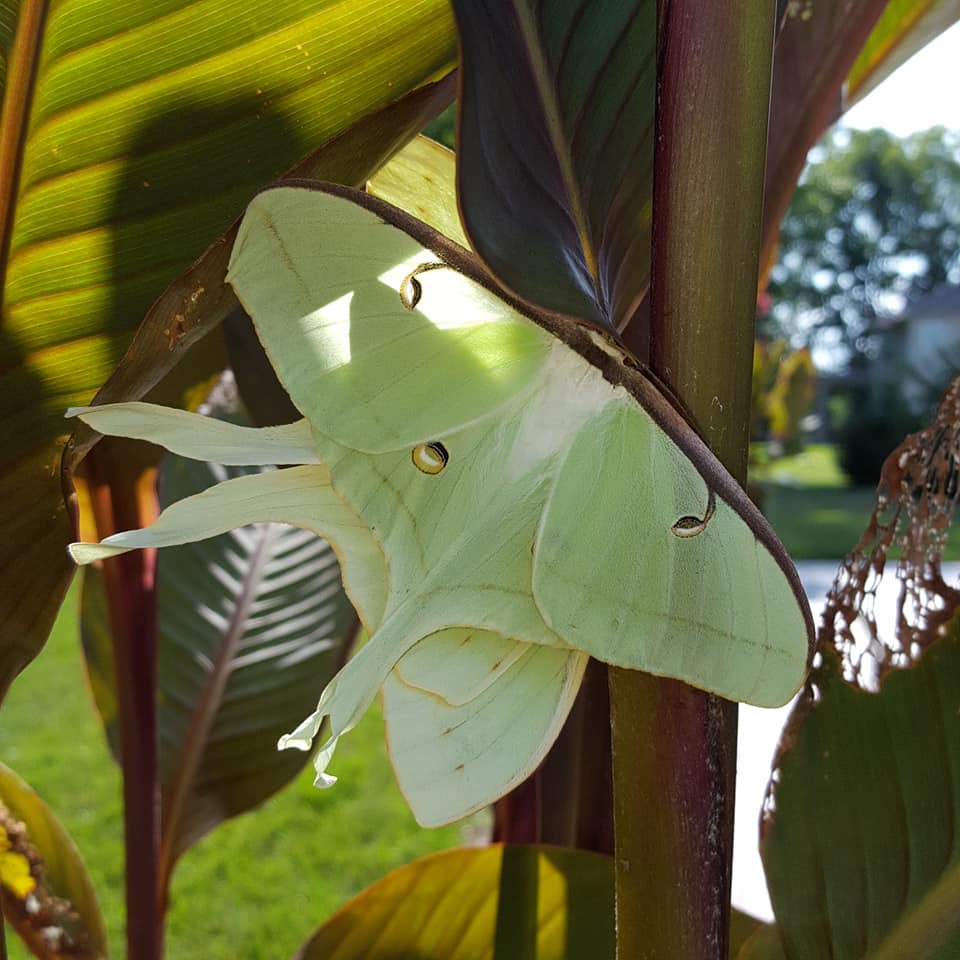
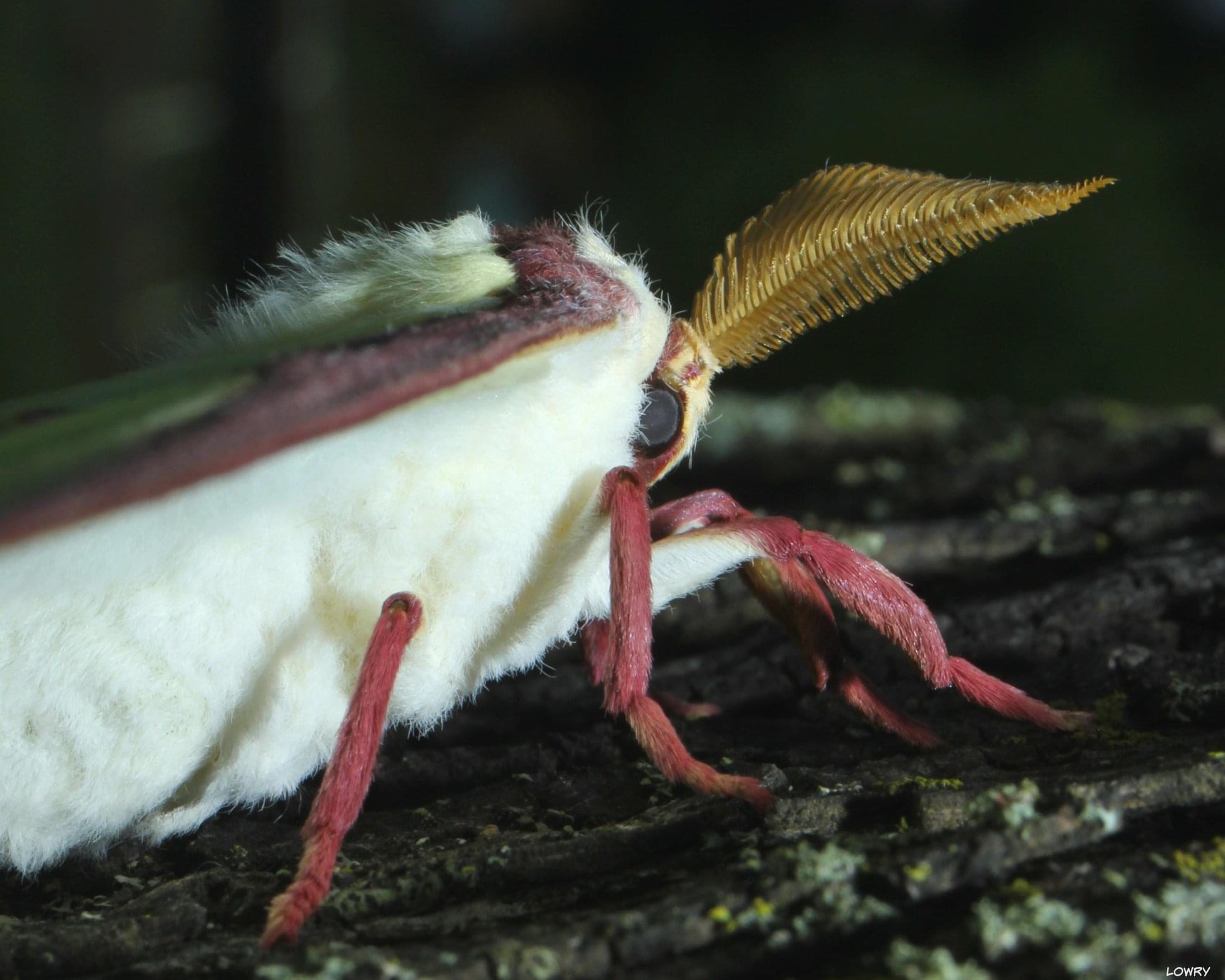



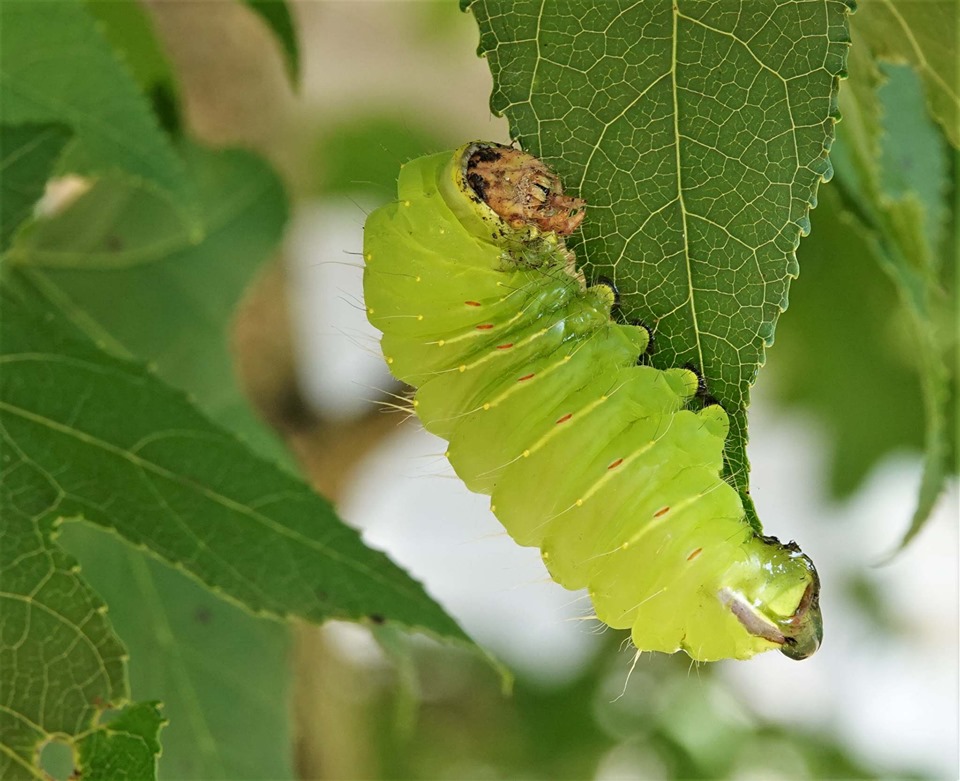
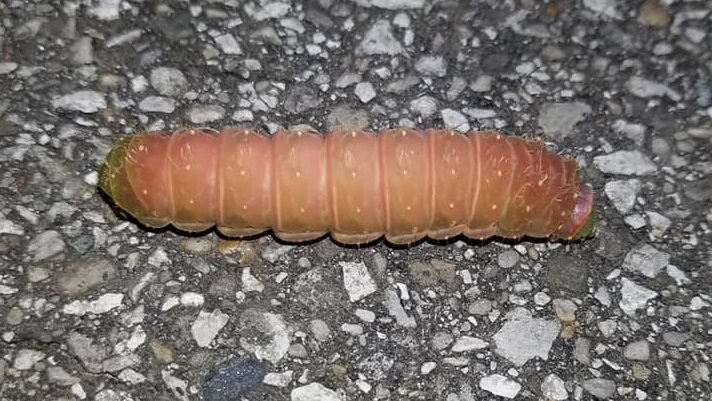

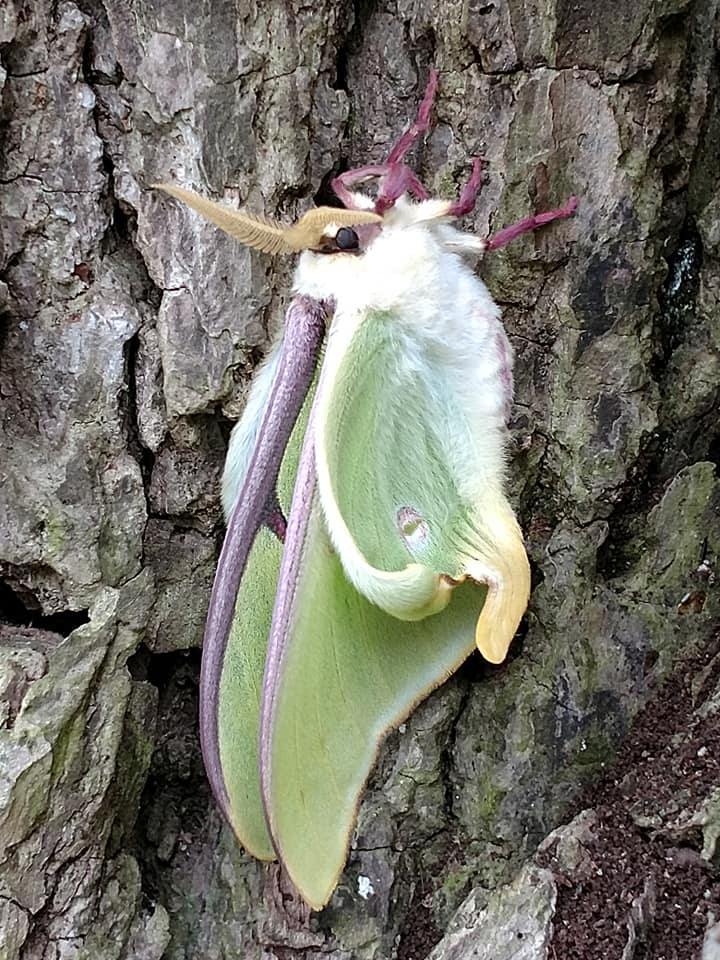
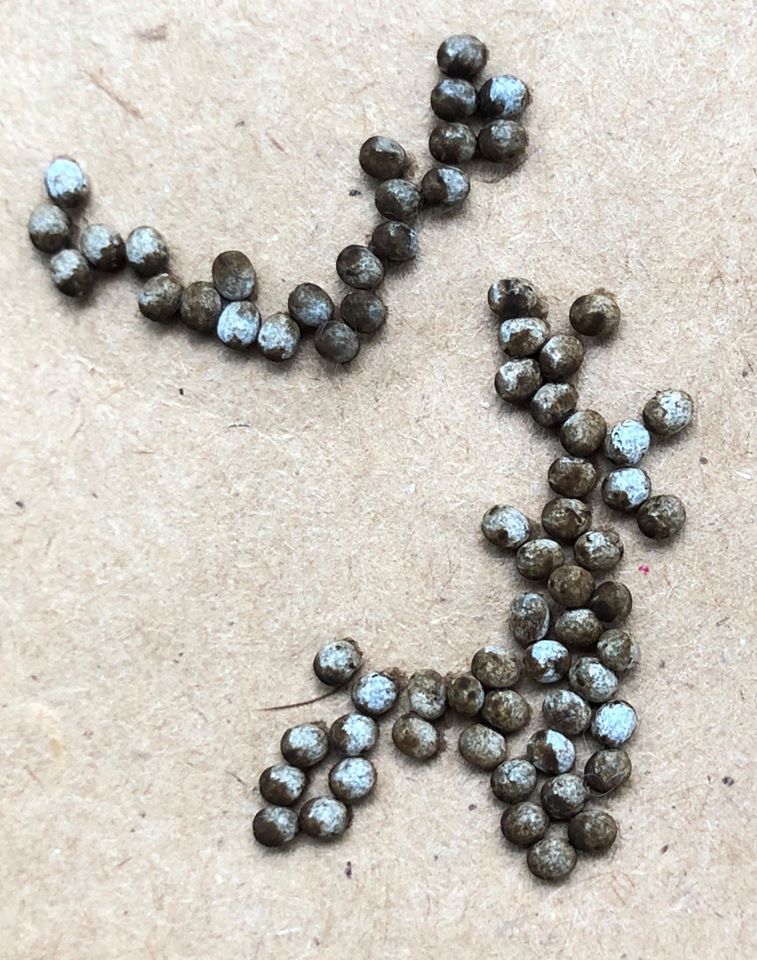
Actias: In Greek mythology, Actaeus was the first king of Attica, father of Aglaurus, and father-in-law to Cecrops.
Luna: Latin for “moon.” A reference to the luna moth’s moon-like eyespots.
ak-tee-uhs loo-nuh













This map illustrates documented North American records of Actias luna as of 31 December 2020.
 Documented record(s)
Documented record(s) 5: Secure
5: Secure  NR: Not ranked
NR: Not ranked
Included within Dru Drury’s three-volume Illustrations of Natural History, Wherein are Exhibited Upwards of 240 Figures of Exotic Insects, published between 1770 and 1787, was a plate featuring a luna moth.

In June of 1987, the United States Postal Service issued a stamp commemorating the luna moth as part of their American Wildlife Series.

Actias luna caterpillars are polyphagous and feed almost exclusively on the foliage of native trees. Adults lack a digestive system, do not eat, and exist solely for reproduction.
| Known Larval Food Sources in Indiana | ||
| Family | Taxonomic Name | Common Name |
|---|---|---|
| Order: Cornales | ||
| Nyssaceae | Nyssa sylvatica | black gum, aka tupelo |
| Order: Ericales | ||
| Ebenaceae | Diospyros virginiana | persimmon |
| Order: Fabales | ||
| Fabaceae | Robinia spp. | locusts |
| Order: Fagales | ||
| Betulaceae | Alnus spp. | alders |
| Betula spp. | birches | |
| Carpinus caroliniana | musclewood, aka blue beech | |
| Ostrya virginiana | hop-hornbeam, aka ironwood | |
| Fagaceae | Castanea dentata | American chestnut |
| Fagus grandifolia | American beech | |
| Quercus spp. | oaks | |
| Juglandaceae | Carya spp. | hickories |
| Juglans spp. | black walnut and butternut | |
| Order: Hamamelidales | ||
| Platanaceae | Platanus occidentalis | American sycamore |
| Order: Magnoliales | ||
| Magnoliaceae | Liriodendron tulipifera | tulip tree |
| Order: Malvales | ||
| Tiliaceae | Tilia americana | American basswood |
| Order: Myrtales | ||
| Lythraceae | Lythrum spp. | loosestrifes |
| Order: Rosales | ||
| Cannabaceae | Humulus spp. | hops |
| Rosaceae | Amelanchier spp. | serviceberries |
| Prunus spp. | cherries | |
| Ulmaceae | Ulmus spp. | elms |
| Order: Salicales | ||
| Salicaceae | Populus spp. | poplars |
| Salix spp. | willows | |
| Order: Sapindales | ||
| Aceraceae | Acer spp. | maples |
| Anacardiaceae | Rhus spp. | sumacs |
| Hippocastanaceae | Aesculus spp. | buckeyes |
| Order: Saxifragales | ||
| Altingiaceae | Liquidambar styraciflua | American sweetgum |
The map, graph(s), and data below represent the Indiana sightings of Actias luna as of 03 May 2024, confirmed through photographic evidence by individuals who contributed to the Great American IN Nature Lepidoptera Project (GAIN LP).
Counties recorded:
67 of 92
Top counties/#of records:
Monroe: 62
Washington: 56
Hamilton: 46
Marion: 40
Brown: 38
Scott: 27
Hendricks: 26
 GAIN LP documented in county
GAIN LP documented in county
The images and records below were all submitted by individuals through the Great American Indiana Nature Lepidoptera Project (GAIN LP).
Barber, Jesse & Leavell, Brian & Keener, Adam & Breinholt, Jesse & Chadwell, Brad & McClure, Christopher & Hill, Geena & Kawahara, Akito. 2015. Moth tails divert bat attack: Evolution of acoustic deflection. Proceedings of the National Academy of Sciences. 112. 2812-2816. 10.1073/pnas.1421926112.